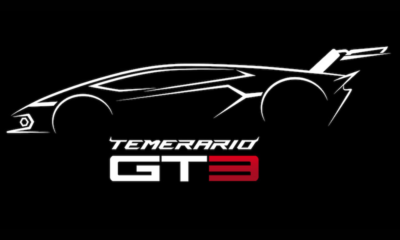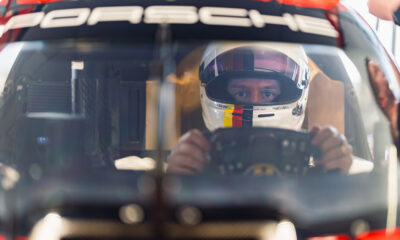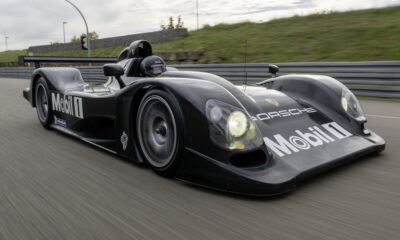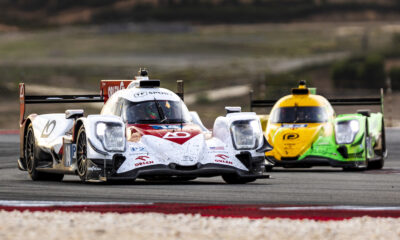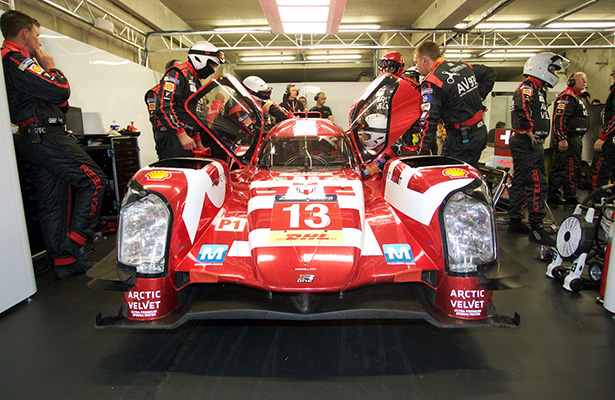
Photo: John Dagys
Rebellion Racing heads into this weekend’s 24 Hours of Le Mans with a fresh start of sorts, as the Anglo-Swiss squad debuts its revised Rebellion R-One, which now features AER power in the back of its LMP1 cars.
It’s been a challenging few months for the Bart Hayden-led organization, which was forced to skip the opening two rounds of the FIA World Endurance Championship in order to make the switch from the normally aspirated Toyota V8 powerplant to AER’s turbocharged P60 motor.
The changes went beyond the engine, however, with an entire new cooling package, electronics and other components having to be designed and installed in the ORECA-built car.
In fact, the only major components carried over included the chassis, front suspension, gearbox, and majority of the bodywork.
“With it being a turbo engine as opposed to a normally aspirated engine, there are other requirements, such as fitting the intercoolers, changes to the way the air is breathed and routed,” Hayden told Sportscar365.
“The electronics that support all of that are a big, big part. They’re perhaps less visible but in terms of the systems in the car, that’s a huge change.”
While ORECA handled the physical integration of the engine into the chassis, Hayden’s Sebah Automotive group took control on the systems side, including the migration to Life Racing electronics.
“We really wanted to start from a clean sheet of paper [on the systems] because we were never really 100 percent happy with the way that they were last year,” Hayden said. “We spent the whole year improving them.
“It was kind of like my first software project that grew and developed and by the end of the year was quite good.
“But then we all sat down and said, ‘Now that we managed to get all of that sorted out, wouldn’t it be nice to start again and do it properly?'”
The cars, which had to be re-homologated, completed build at ORECA last month, prior to a rollout at Paul Ricard.
“It was really a collaborative effort, which I think is quite good,” Hayden said. “We feel that from an overall car package point of view we’re quite strong.
“What we don’t have unfortunately is many miles under our belts but we can’t really help that.”
The No. 12 car of Nick Heidfeld, Nicolas Prost and Mathias Beche showed promise in Wednesday’s opening qualifying session, by laying down a 3:26.874 lap, some 14 seconds quicker than the other non-hybrid LMP1 in class.
Yet with limited testing, the true test will come this weekend, with Hayden setting realistic expectations.
“I’d love to get both cars to the end, but in a strong position,” he said. “I don’t want to just limp around and say we got to the end.
“To repeat last year’s performance I think is probably a little ambitious given that there are more factory cars from the teams that were here plus another factory team.
“Last year we achieved a fourth overall, which probably surprised us as much as anything. If we could repeat that, that would be unbelievable.
“Realistically, I think a top-six is an ambitious but reasonable target.”
Hayden estimates the switch to the AER powerplant has resulted in a gain of roughly 80 horsepower, although there’s been changes to the Equivalence of Technology for non-hybrid cars, including a 60 kg minimum weight increase from last year.
Nonetheless, the team is committed for the remainder of the FIA WEC season with two cars, with the intention to return in 2016 with the same Rebellion-AER package.
“One of the things about the previous package was the availability of the parts was that racing beyond 2015 would have been difficult,” Hayden said. “With this engine package, it’s good for 2016, so that means we’re aiming to be back here again.
“[The engine change] was a decision that came late and had consequences. But the positive of that are that it should give us a package that’s eligible to race through 2016 and possibly into 2017 if there’s a grandfathering year.”

















